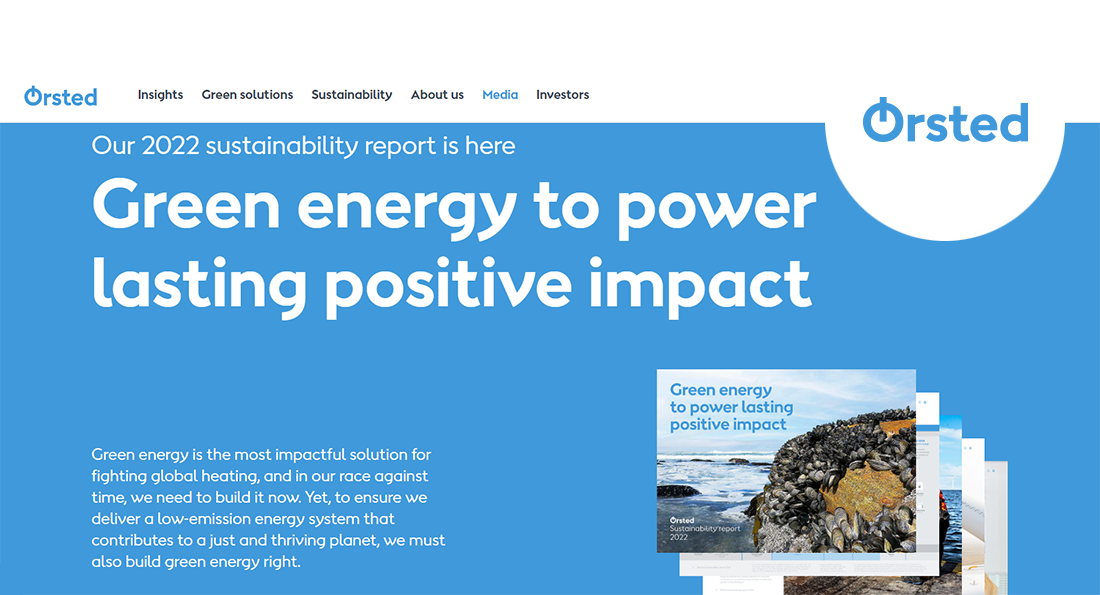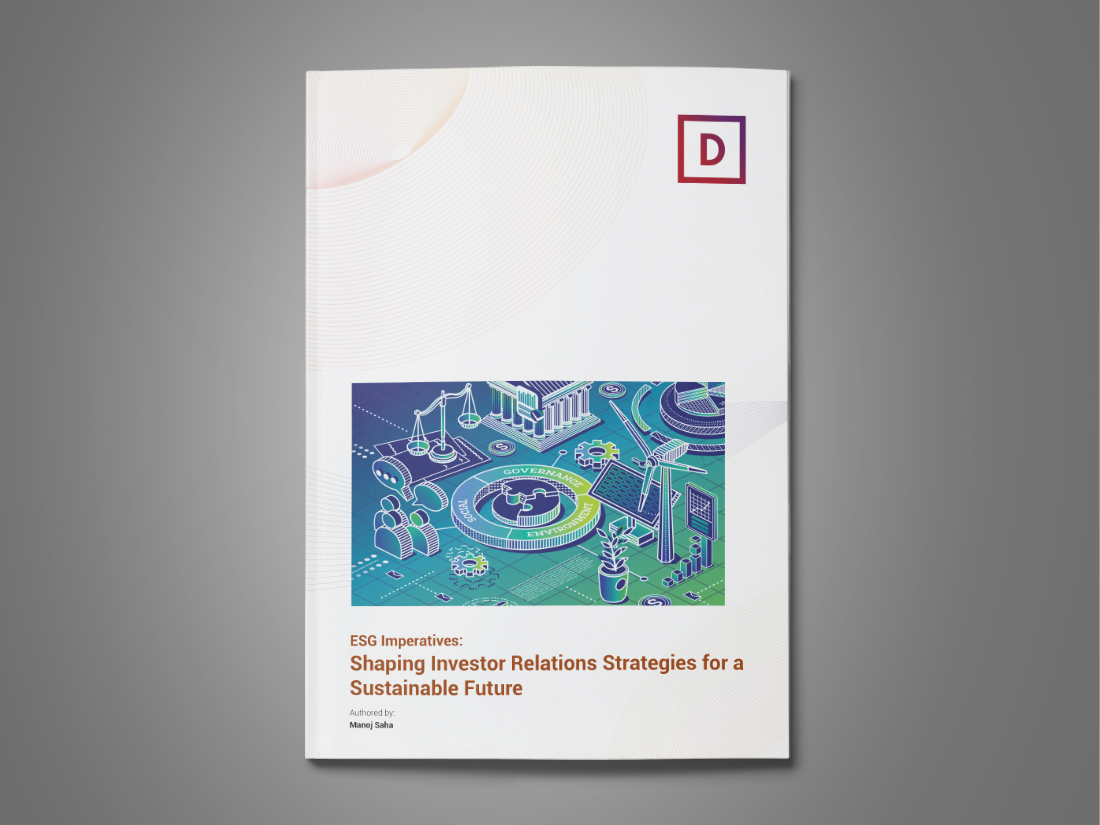ESG Imperatives: Shaping Investor Relations Strategies for a Sustainable Future?
The global investment landscape is witnessing a transformative shift, with Environmental, Social, and Governance (ESG) issues gaining prominence. Investors now prioritize ESG as the key determinant of a company’s long-term value and sustainability. This essay examines the growing importance of ESG issues for investors and the critical role Investor Relations Officers (IROs) play in developing and communicating their company’s ESG strategy and performance. By citing relevant studies and data, the essay emphasizes the necessity of a well-structured ESG strategy to attract and retain investors.
Industry experts predict that ESG investments could reach between $53 trillion and $70 trillion by 2025, accounting for roughly half of global professionally managed assets.
1. Introduction
ESG issues have increasingly become a focal point in the investment decision-making process. According to a Global Sustainable Investment Alliance report, global sustainable investment assets reached $35.3 trillion in 2020, representing 36% of all professionally managed assets1. This growth trend will likely continue, driven by increasing investor awareness, regulatory pressure, and recognizing the financial benefits of strong ESG performance.
Some industry experts predict that ESG investments could reach between $53 trillion and $70 trillion by 2025, accounting for roughly half of global professionally managed assets2.
Based on these trends, Goldman Sachs made ten predictions for sustainable investing in 20233 They highlight the continued growth and evolution of the ESG landscape and foresee an acceleration in capital allocation towards sustainable assets, increased regulatory scrutiny, and a surge in ESG integration across investment strategies. Furthermore, they anticipate that technological advancements will facilitate better ESG data and analytics, while investor demands for transparency will drive improvements in ESG reporting standards. These trends underscore the necessity for companies and investors alike to adapt to an increasingly sustainability-focused market environment to capitalize on emerging opportunities and mitigate potential risks.
2. The Growing Importance of ESG Issues for Investors
2.1. Regulatory and Policy Changes
Governments and regulators increasingly promote ESG integration in the investment process through policy initiatives and regulations. For instance, the European Union’s Sustainable Finance Disclosure Regulation (SFDR) requires financial market participants to disclose information related to the ESG impacts of their investment decisions. These regulatory developments make it crucial for companies to improve their ESG performance and attract investors.
2.2. Risk Management and Long-term Value Creation
Investors recognize the potential risks of poor ESG performance, such as environmental disasters, labour disputes, an corporate governance scandals. McKinsey & Company (2019) found that companies with strong ESG performance tend to have lower capital costs, lower volatility, and higher valuations, making them more attractive to investors. Companies with robust ESG practices are better positioned
to manage risks, capitalize on opportunities, and create long-term shareholder value.
-
Sources: [1] Global Sustainable Investment Alliance. (2020). Global Sustainable Investment Review 2020. https://www.gsi-alliance.org/wp-content/uploads/2021/03/GSIR_Review2020.pdf
- [2] Business Insider. (2021). ESG investing could account for over half of professionally managed assets by 2025, according to a UBS report. https://markets.businessinsider.com/news/stocks/esginvesting-assets-under-management-half-2025-ubs-report-2021-3-1030317481
-
Sustainable investing in 2023: Ten predictions from Goldman Sachs (energyvoice.com)
The Impact of ESG Practices on Risk Management and Long-term Value Creation: A Case Study of Unilever

Unilever, a multinational consumer goods company, has been at the forefront of adopting and implementing robust ESG practices. Their commitment to sustainability and strong ESG performance has helped them manage risks and create long-term value for their shareholders.
ESG Practices and Risk Management
Unilever’s Sustainable Living Plan, launched in 2010, is an ambitious roadmap that outlines the company’s sustainability goals in areas such as environmental impact reduction, improving health and well-being, and enhancing livelihoods (Unilever, 2021)[1]. This comprehensive plan has enabled Unilever to proactively identify and address potential risks associated with their operations, including climate change, water scarcity, and labor issues.
In 2017, Unilever became the first company to publicly disclose its entire palm oil supply chain, demonstrating its commitment to transparency and addressing the environmental and social risks associated with palm oil production (Unilever, 2017)[2]. This move helped Unilever identify potential issues in their supply chain and take corrective action, effectively managing reputational and operational risks.
ESG Practices and Long-term Value Creation
Unilever’s dedication to ESG practices has resulted in tangible benefits for the company and its shareholders. A 2018 study by Harvard Business School found that companies with strong ESG performance, including Unilever, exhibit better operational performance and lower cost of capital, ultimately leading to higher shareholder value (Khan, Serafeim, & Yoon, 2016)[3]
Furthermore, Unilever’s commitment to sustainability has helped the company gain a competitive advantage by attracting and retaining customers who prioritize responsible consumption. In 2019, Unilever reported that its sustainable living brands grew 69% faster than the rest of the business, delivering 75% of its overall growth (Unilever, 2019)[4]. This growth indicates that Unilever’s focus on ESG practices has positively contributed to its long-term value creation.
Conclusion
Unilever’s proactive approach to ESG practices has effectively mitigated risks and created long-term value for the company and its shareholders. By embracing sustainability and integrating ESG factors into its business strategy, Unilever is a prime example of the benefits ofstrong ESG performance.
[1] Unilever. (2021). Our Sustainable Living Plan. https://www.unilever.com/sustainable-living/
[3] Khan, M., Serafeim, G., & Yoon, A. (2016). Corporate Sustainability: First Evidence on Materiality. The Accounting Review, 91(6), 1697-1724. https://doi.org/10.2308/accr-51383
[4] Unilever. (2019). Growing sustainably. https://www.unilever.com/planet-and-society/growing-sustainably
2.3. Societal and Demographic Changes
Growing awareness of environmental and social issues among the general public has increased pressure on companies to adopt responsible business practices. Millennials and Generation Z, set to inherit trillions of dollars in wealth, are particularly concerned about the impact of their investments on society and the environment (Deloitte, 2020). Companies with strong ESG performance will likely appeal to these demographic groups and secure their investment.
The Influence of Societal and Demographic Changes on ESG Strategies: A Case Study of Patagonia

Patagonia, a leading outdoor clothing and gear company, is well-known for its environmental and social responsibility commitment. As societal and demographic shifts drive a growing demand for sustainable products, Patagonia’s ESG-focused business strategies have positioned the company to capitalize on these changes, appealing to increasingly sustainability-conscious consumers.
Societal and Demographic Changes
Growing environmental awareness and social activism has increased consumer demand for sustainable products and responsible business practices. Millennials and Generation Z, in particular, prioritize ESG factors when making purchasing decisions (Deloitte, 2020)[1]. These demographic groups are more likely to support companies with strong ESG performance, reflecting their concerns about climate change, social inequality, and corporate governance.
Patagonia’s ESG Strategies
Patagonia has consistently incorporated ESG principles into its business strategies, focusing on sustainable materials, fair labor practices, and environmental advocacy. For instance, the company has committed to using 100% renewable and recycled materials in its products by 2025 (Patagonia, 2021)[2]. Patagonia also became a Certified B Corporation in 2012, meeting high social, environmental, and transparency standards (B Corporation, n.d.)[3].
Impact on Business Performance
Patagonia’s ESG-focused approach has resonated with its target demographic, allowing the company to build a loyal customer base and maintain a competitive advantage in the outdoor apparel industry. A 2019 Harvard Business Review case study highlighted that Patagonia’s revenue quadrupled between 2008 and 2018, outpacing competitors (Reinhardt,
Casadesus-Masanell, & Kim, 2019)[4]. The company’s strong ESG performance has also generated positive media coverage and earned it a reputation as a sustainability leader.
Additionally, Patagonia’s commitment to ESG principles has enabled the company to attract and retain talented employees who share its values. According to a 2020 Forbes article, Patagonia’s employee retention rate is 94%, indicating high job satisfaction and alignment with the company’s mission (Forbes, 2020)[5].
Conclusion
Patagonia’s case study exemplifies how responding to societal and demographic changes by adopting robust ESG strategies can positively impact a company’s performance and reputation. By embracing sustainability and social responsibility, Patagonia has successfully navigated the shifting consumer landscape, attracting and retaining customers and employees who prioritize ESG factors.
[1] Deloitte. (2020). The Deloitte Global 2020 Millennial Survey. https://www2.deloitte.com/global/en/pages/about- deloitte/articles/millennialsurvey.html
[2] Patagonia. (2021). Our Mission: We’re in Business to Save Our Home Planet. https://www.patagonia.com/our-mission/
[3] B Corporation. (n.d.). Patagonia Works. https://bcorporation.net/directory/patagonia-works
[4] Reinhardt, F. L., Casadesus-Masanell, R., & Kim, T. R. (2019). Patagonia: A Sustainable Outlook on Business. Harvard Business Review. https://www.hbs.edu/faculty/Pages/item.aspx?num=55707
[5] Fetsch, E. (2020). Want To Work For A Sustainable Company?
Try Patagonia. Forbes. https://www.forbes.com/sites/forbeshumanresourcescouncil/2020/01/30/want-to-work-for-a-s
3. The Role of Investor Relations Officers in ESG Communication
3.1. Developing a Comprehensive ESG Strategy
IROs must collaborate with the company’s management to develop a comprehensive ESG strategy that aligns with the organization’s overall business objectives. This includes setting clear ESG targets, identifying material ESG issues, and developing a robust governance framework to ensure accountability and transparency (BlackRock, 2021). A well-structured ESG strategy helps companies address potential risks, capitalize on opportunities, and effectively communicate their ESG performance to investors.
A Comprehensive ESG Strategy for Investor Relations: A Case Study of Ørsted

Introduction
Ørsted, a Danish renewable energy company, has transformed remarkably from a fossil fuel-based utility to a global leader in renewable energy. The company’s Investor Relations Officers (IROs) have played a critical role in developing and communicating a comprehensive ESG strategy, effectively attracting and retaining investors focused on sustainability.
Ørsted’s Comprehensive ESG Strategy
1. Clear ESG Targets and Objectives
Ørsted has set ambitious targets in its ESG strategy, aiming to reduce greenhouse gas emissions by 98% by 2025 and achieve carbon neutrality by 2040 (Ørsted, 2021)[1]. By establishing clear and measurable ESG objectives, Ørsted’s IROs provide investors with a roadmap for the company’s sustainability journey.
2. Materiality Assessment and Focus Areas
Ørsted has identified material ESG issues relevant to its business through a robust materiality assessment process. The company focuses on six strategic themes: climate change mitigation, renewable energy generation, responsible business practices, biodiversity protection, social impact, and corporate governance (Ørsted, 2020)[2]. This targeted approach enables Ørsted’s IROs to communicate the company’s ESG priorities to investors.
3. Governance Framework and Accountability
Ørsted has established a robust governance framework to ensure accountability and transparency in its ESG performance. The company’s Board of Directors oversees ESG-related risks and opportunities, while an executive-level Sustainability Committee drives the implementation of Ørsted’s ESG strateg (Ørsted, 2020)[2]. This governance structure enables the IROs to demonstrate the company’s commitment to ESG management.
4. Transparent and Consistent ESG Reporting
Ørsted adheres to leading ESG reporting standards, including the Global Reporting Initiative (GRI), the Sustainability Accounting Standards Board (SASB),and the Task Force on Climate-related Financial Disclosures (TCFD) (Ørsted, 2020)[2]. Following these frameworks, the company’s IROs provide investors with transparent, consistent, and comparable ESG information, facilitating informed investment decisions.
Impact on Investor Relations and Business Performance
Ørsted’s comprehensive ESG strategy has resonated with investors, increasing the company’s market capitalization from approximately $10 billion in 2016 to over $60 billion in 2021 (Financial Times, 2021)[3]. Ørsted has also been recognized as one of the world’s most sustainable companies by Corporate Knights’ Global 100 Index (Corporate Knights, 2021)[4]. This recognition has further enhanced the company’s reputation among investors focused on ESG performance.
Conclusion
Ørsted’s case study demonstrates how a well-developed ESG strategy can enable IROs to attract and retain sustainability-conscious investors. By setting clear ESG targets, focusing on material issues, establishing robust governance structures, and ensuring transparent reporting, IROs can effectively communicate their company’s commitment to ESG and drive long-term value creation.
[1] Ørsted. (2021). Our commitment to a world that runs entirely on green energy. https://orsted.com/en/Our-business/Ourcommitment
[2] Ørsted.2020). Sustainability Report 2020. https://orstedcdn.azureedge.net/-/media/WWW/Docs/Corp/COM/Sustainability/Orsted_sustainability_report_2020.ashx
[3] Financial Times. (2021). Ørsted A/S. https://markets.ft.com

3.2. Transparent and Timely ESG Reporting
Investors increasingly demand transparent, consistent, and comparable ESG information to assess a company’s performance accurately. IROs must ensure that their company’s ESG reporting adheres to widely accepted standards and frameworks, such as the Global Reporting Initiative (GRI), the Sustainability Accounting Standards Board (SASB), or the Task Force on Climate-related Financial Disclosures (TCFD). Transparent and timely ESG reporting is vital to attract and retaining investors who prioritize ESG issues in their investment decisions.
Transparent and Timely ESG Reporting for Investor Relations: A Case Study of Microsoft
Introduction
Microsoft, a leading technology company, has been recognized for its commitment to transparent and timely ESG reporting. The company’s Investor Relations Officers (IROs) play a crucial role in ensuring investors have access to relevant, accurate, and up-to-date ESG information, which ultimately contributes to the company’s strong ESG reputation and investor confidence. Microsoft’s Transparent and Timely ESG Reporting
1. ESG Reporting Frameworks and Standards
Microsoft’s IROs ensure that the company’s ESGreporting adheres to widely accepted frameworks andstandards, such as the Global Reporting Initiative (GRI),the Sustainability Accounting Standards Board (SASB),and the Task Force on Climate-related FinancialDisclosures (TCFD) (Microsoft, 2020)[1]. By aligningwith these standards, Microsoft provides investorscomparable, consistent, and decision-useful ESGinformation.
2. Comprehensive ESG Disclosures
Microsoft’s annual Corporate Social Responsibility(CSR) report covers a wide range of ESG topics,including environmental performance, social impact,human rights, and corporate governance (Microsoft,2020)[1]. The company’s IROs ensure that the reportis comprehensive, addressing material ESG issuesand providing quantitative and qualitative data todemonstrate the company’s progress and performance.
3. Regular ESG Updates and Communication
In addition to the annual CSR report, Microsoft’s IROs maintain ongoing communication with investors through quarterly earnings calls, webinars, and investor presentations. These communication channels provide timely updates on the company’s ESG initiatives and performance, ensuring investors can access the latest information (Microsoft, 2021)[2].
4. Accessibility and Transparency
Microsoft’s IROs ensure that ESG reports and related information are easily accessible to investors through the company’s investor relations website. The company also engages with stakeholders, including investors, through various platforms, such as the annual shareholder meeting and regular investor conferences, to address ESG-related questions and concerns
(Microsoft, 2021)[2].

Impact on Investor Relations and Business Performance
Microsoft’s commitment to transparent and timely ESG reporting has contributed to the company’s strong ESG reputation, which has been recognized by leading ESG rating agencies, such as MSCI and Sustainalytics (Microsoft, 2020)[1]. This recognition has helped the company attract and retain sustainability-focused investors, creating long-term value and solidifying its position as a responsible corporate citizen.
Conclusion
Microsoft’s case study exemplifies how transparent and timely ESG reporting can enhance investor relations and improve a company’s overall ESG reputation. By adhering to leading ESG reporting standards, providing comprehensive ESG disclosures, maintaining regular communication with investors, and ensuring accessibility and transparency, IROs can effectively convey their company’s commitment to sustainability and drive investor confidence.
Sources:
[1] Microsoft. (2020). Microsoft 2020 Corporate Social Responsibility (CSR) Report.https://www.microsoft.com/en-us/corporate-responsibility/reports-hub
[2] Microsoft. (2021). Investor Relations. https://www.microsoft.com/en-us/Investor
4. Conclusion
The rising importance of ESG issues for investors calls for an increased focus on developing and communicating effective ESG strategies. Investor Relations Officers are critical in ensuring companies implement responsible business practices and report their ESG performance transparently. Companies can attract and retain investors who prioritize sustainability and long-term value creation by aligning their ESG strategies with business objectives, addressing material ESG issues, and adhering to globally recognized reporting standards.
As Robert F. Kennedy once said, “The purpose of life is to contribute in some way to making things better.” By implementing effective ESG strategies and transparent reporting, IROs are indeed helping to make things better for investors, companies, and society as a whole. In an era where ESG factors are becoming increasingly important, IROs must be at the forefront of these developments, enabling their companies to maintain a competitive edge and foster sustainable growth.
Partnering with experienced IR service providers like Dickenson World can be instrumental in hardwiring best IR practices. By leveraging their expertise and solutions, IROs can effectively navigate the evolving ESG landscape, ensuring that their companies remain attractive to sustainability-conscious investors and continue to drive sustainable growth.

ESG Imperatives: Shaping Investor Relations Strategies for a Sustainable Future?
To download and save this article.
Authored by:
Manoj Saha
manoj.saha@dickensonworld.com
To know more on how Dickenson can assist you at this critical juncture, email to enquiry@dickensonworld.com


Leave A Comment